#cerapoda
Text

Day 7 of the week 2: A modern dinosaur (bird/birb)
A psittacosaurus and a blue macaw.
#my art#dinosaur#dinosaurs#paleoart#dinosauria#myart#psittacosaurus#ceratopsian#cerapoda#marginocephalia#ceratopsia#parrots#birds#blue macaw#macaw#dinocember2021#dinocember#artists on tumblr#sketchbookapp
5 notes
·
View notes
Photo

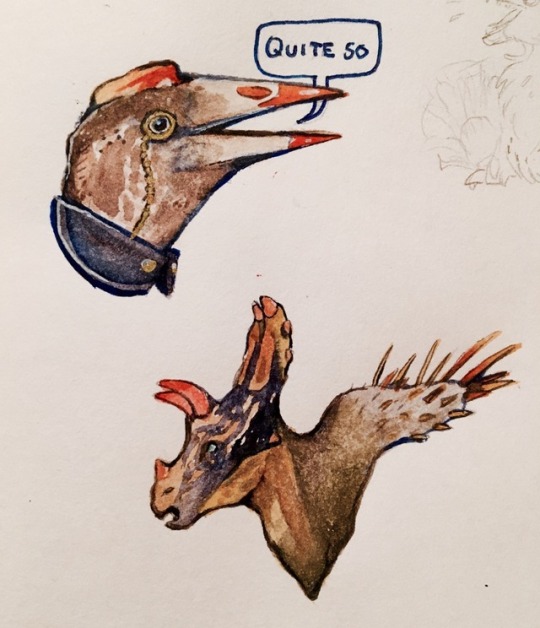
Quite a long time ago I posted any watercolor pics, so here you go! Unspecified species btw lol
#cerapoda#ceratopsids#ceratopsian#pterosaur#prehistoric#dino#dinosaurs#dinosaur#illustration#artists on tumblr#doodles#doodle#watercolor
81 notes
·
View notes
Text
Diabloceratops eatoni
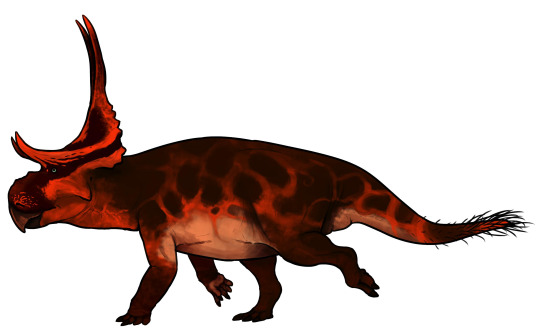
By Jack Wood
Etymology: Devil Horned Face
First Described By: Kirkland et al., 2010
Classification: Dinosauromorpha, Dinosauriformes, Dracohors, Dinosauria, Ornithischia, Genasauria, Neornithischia, Cerapoda, Marginocephalia, Ceratopsia, Neoceratopsia, Coronosauria, Ceratopsoidea, Ceratopsidae, Centrosaurinae?
Status: Extinct
Time and Place: Between 81 and 79 million years ago, in the Campanian of the Late Cretaceous


Diabloceratops is known from the lower and middle members of the Wahweap Formation of Utah

Physical Description: Diabloceratops is one of the most completely visually distinctive Ceratopsids - like all members of this very samey group, its body was the same as the rest of them, but its head was distinctive enough to give it a famous name. Like other Ceratopsids, Diabloceratops had four squat legs, a thick torso, and a short tail. It had a long head, with a large crest and a giant beak in the front of its snout, as well as teeth well built for chewing. The interesting thing about this Ceratopsid is that, while it has small brow horns like most early members of this group, it also had two very noticeable horns coming out of its frills - curving away from each other, the left one curving out to the left and the right one curving out to the right. This gave Diabloceratops the very distinctive look of… well, the Christian depiction of Satan. Hence its name, Devil Horned Face! It had a lightly built skull, with a hole seen in earlier Ceratopsians than the later Ceratopsids, and its head was shorter and deeper than later members. The frill of Diabloceratops was kind of weird too - very tall and narrow, rather than wider as in later Ceratopsians. Diabloceratops was primarily scaly all over, though it is possible (especially given how early derived it was) that it had quills or feathery fluff on its tail like earlier Ceratopsians. It was probably about 5.5 meters long from head to tail.

By Nix, CC BY-NC 4.0
Diet: As a Ceratopsid, Diabloceratops probably fed primarily on plants, though it is possible that it supplemented its diet with meat from time to time for protein. It would focus on low-lying and medium-level plant material, less than a meter in height.
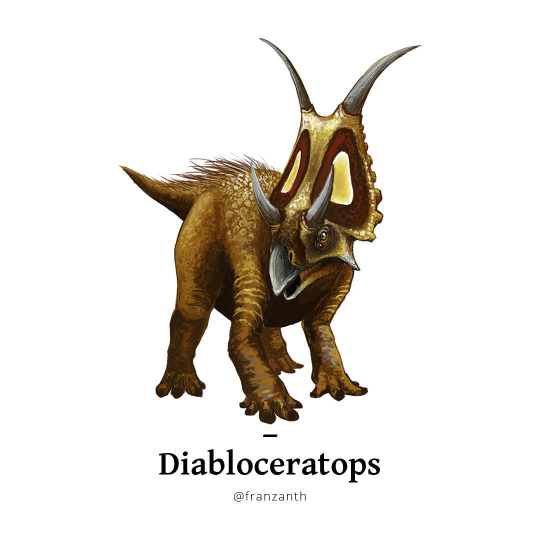
By Franz Anthony
Behavior: The frill and fancy spikes of Diabloceratops would have been primarily used in sexual display and other types of communication between members of the herd, especially since they were rather small all things considered. That being said, other Ceratopsians would use these features for defense, and it is thus likely that Diabloceratops did too, even though they didn’t evolve for such a purpose. Diabloceratops, like other Ceratopsians, would have been a very social animal, spending most of its life in herds with socially complex behavior. These herds would have aided Diabloceratops in defending itself from the local predator Lythronax, and any other predatory animals that may have attempted to attack it. Like other dinosaurs, Diabloceratops probably would have taken care of its young, and the social group would have aided it in doing so. Being a large herbivore with deadly weapons on its face, Diabloceratops would have been a very aggressive animal, not trusting anything that got too close to it or its family. It is possible that Diabloceratops herds also migrated too and from the Western Interior Seaway, based on the seasonal rainfall.

By Sam Stanton
Ecosystem: The Wahweap Formation is one of the earliest environments we know of from the charismatic and iconic Late Cretaceous North American faunas - those ecosystems from the Campanian and Maastrichtian which featured Ceratopsians, Hadrosaurs, and Ankylosaurs a plenty, all being preyed upon by terrifying Tyrannosaurs. Weirdly enough, this unique makeup of these ecosystems is unique to North America - while Hadrosaurs could be found elsewhere somewhat, both Tyrannosaurs and Ceratopsids were very rare elsewhere, Ceratopsids especially so. Instead, the world was frequented with many other kinds of large predatory dinosaurs (especially Abelisaurids), and Titanosaurs were some of the most common large herbivores. But I am getting off track - the Wahweap Formation is one of the earliest of these charismatic locations, and as expected, it has some of the earliest members of these groups to branch off, including Diabloceratops. The Wahweap Formation began as a very dry ecosystem, filled with sand and very brief wet seasons; over time, it became a pond ecosystem and - by the time Diabloceratops disappeared - a very fertile system of rivers running in from the Western Interior Seaway.

By Nathan E. Rogers, used with permission from Studio 252Mya
So, in the time of the earliest part of the formation, Diabloceratops was a living in an extremely seasonally varied environment, as it began to transition to more freshwater being present in later millenia from its earlier dry beginnings. The diversity of the later environments, however, was lacking in the earliest one. Here, Diabloceratops was preyed upon by Lythronax, and while some mammals, turtles, and crocodylomorphs were present, it is entirely possible that the great diversity of mammals and other animals to be found later wasn’t present quite yet. In the middle environment, when the ponds were coming in and things were getting more lush, Lythronax was gone - but now Diabloceratops was accompanied by the Hadrosaur Acristavus, similar to the later Maiasaura. There were many non-dinosaurs too, like turtles, though it is uncertain if the many mammals found in Wahweap are from the middle, lower, or upper parts of this environment.
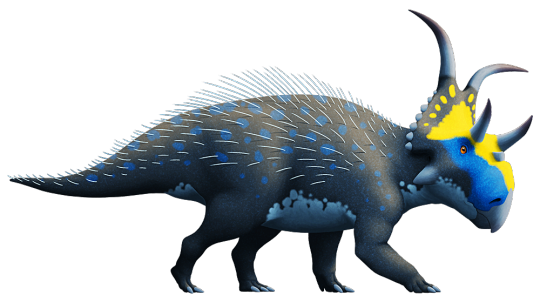
By Nix, CC BY-NC 4.0
Interestingly enough, one of Diabloceratops’ closest relatives, Machairoceratops, is known from the upper unit of this formation - indicating that it is possible that Diabloceratops evolved into Machairoceratops, and never really disappeared from the environment at all.
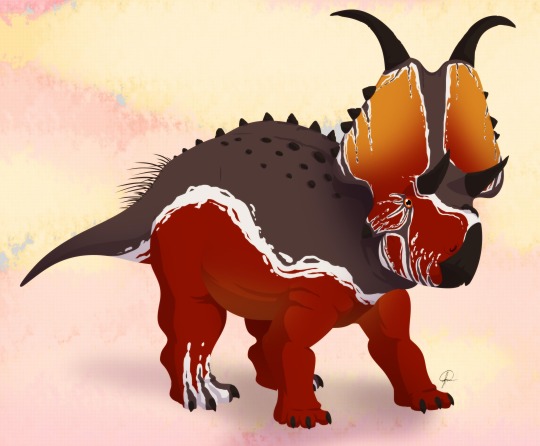
By José Carlos Cortés
Other: Diabloceratops is usually found to be a Centrosaurine, the group of Ceratopsids with prominent nose horns and frill ornamentation, and usually little to no brow horns. However, a very recent analysis of Ceratopsian relationships found Diabloceratops to be neither a Centrosaurine nor a Chasmosarine (the other group of Ceratopsians, which includes Triceratops and its closest relatives), but rather outside both. Either way, Diabloceratops was a very early Ceratopsids, showing characteristics that are often found in common between both of the major groups of these dinosaurs - and showing how weird their headgear got even early on in their evolution.
~ By Meig Dickson
Sources Under the Cut
Chiba, K.; Michael J. Ryan; Federico Fanti; Mark A. Loewen; David C. Evans (2018). "New material and systematic re-evaluation of Medusaceratops lokii (Dinosauria, Ceratopsidae) from the Judith River Formation (Campanian, Montana)". Journal of Paleontology. in press (2): 272–288.
Dalman, Sebastian G.; Hodnett, John-Paul M.; Lichtig, Asher J.; Lucas, Spencer G. (2018). "A new ceratopsid dinosaur (Centrosaurinae: Nasutoceratopsini) from the Fort Crittenden Formation, Upper Cretaceous (Campanian) of Arizona". New Mexico Museum of Natural History and Science Bulletin. 79: 141–164.
De Blieux, Donald D. 2007. Analysis of Jim's hadrosaur site; a dinosaur site in the middle Campanian (Cretaceous) Wahweap Formation of Grand Staircase-Escalante National Monument (GSENM), southern Utah. Abstracts with Programs – Geological Society of America 39 (5): 6.
Eaton, J. G., R. L. Cifelli. 2005. Review of Cretaceous mammalian paleontology; Grand Staircase-Escalante National Monument, Utah. Abstracts with Programs - Geological Society of America 37 (7): 115.
Evans, D. C., and M. J. Ryan. 2015. Cranial anatomy of Wendiceratops pinhornensis gen. et sp. nov., a centrosaurine ceratopsid (Dinosauria: Ornithischia) from the Oldman Formation (Campanian), Alberta, Canada, and the evolution of ceratopsid nasal ornamentation. PLoS ONE 10(7):e0130007
Farke, A. A. 2011. Anatomy and taxonomic status of the chasmosaurine ceratopsid Nedoceratops hatcheri from the Upper Cretaceous Lance Formation of Wyoming, U.S.A. PLoS One 6(1(e16196)):1-9
Farke, A. A., M. J. Ryan, P. M. Barrett, D. H. Tanke, D. R. Braman, M. A. Loewen, and M. R. Graham. 2011. A new centrosaurine from the Late Cretaceous of Alberta, Canada, and the evolution of parietal ornamentation in horned dinosaurs. Acta Palaeontologica Polonica 56(4):691-702
Fiorillo, A. R., and R. S. Tykoski. 2012. A new Maastrichtian species of the centrosaurine ceratopsid Pachyrhinosaurus from the North Slope of Alaska. Acta Palaeontologica Polonica 57(3):561-573
Fowler, D. W. 2017. Revised geochronology, correlation, and dinosaur stratigraphic ranges of the Santonian-Maastrichtian (Late Cretaceous) formations of the Western Interior of North America. PLoS ONE 12 (11): e0188426.
Gates, T.A.; Horner, J.R.; Hanna, R.R.; Nelson, C.R. (2011). "New unadorned hadrosaurine hadrosaurid (Dinosauria, Ornithopoda) from the Campanian of North America". Journal of Vertebrate Paleontology. 31 (4): 798–811.
Gates, Jinnah, Levitt, and Getty, 2014. New hadrosaurid specimens from the lower-middle Campanian Wahweap Formation of southern Utah. pp. 156–173. In The Hadrosaurs: Proceedings of the International Hadrosaur Symposium (D. A. Eberth and D. C. Evans, eds), Indiana University Press, Bloomington.
Getty, M. A., M. A. Loewen, E. M. Roberts, A. L. Titus, and S. D. Sampson. 2010. Taphonomy of horned dinosaurs (Ornithischia: Ceratopsidae) from the late Campanian Kaiparowits Formation, Grand Staircase-Escalante National Monument, Utah. In M. J. Ryan, B. J. Chinnery-Allgeier, D. A. Eberth (eds.), New Perspectives on Horned Dinosaurs: The Royal Tyrrell Museum Ceratopsian Symposium. Indiana University Press, Bloomington 478-494
Hone, D.W.E.; Naish, D.; Cuthill, I.C. (2011). “Does mutual sexual selection explain the evolution of head crests in pterosaurs and dinosaurs?” (PDF). Lethaia. 45 (2): 139–156.
Glut, D. F., 2012, Dinosaurs, the Encyclopedia, Supplement 7: McFarland & Company, Inc, 866pp.
Kentaro Chiba; Michael J. Ryan; Federico Fanti; Mark A. Loewen; David C. Evans (2018). "New material and systematic re-evaluation of Medusaceratops lokii (Dinosauria, Ceratopsidae) from the Judith River Formation (Campanian, Montana)". Journal of Paleontology. in press (2): 272–288.
Kirkland, J. I. 2005. An inventory of paleontological resources in the lower Wahweap Formation (lower Campanian), southern Kaiparowits Plateau, Grand Staircase-Escalante National Monument, Utah. Abstracts with Programs - Geological Society of America 37 (7): 114.
Kirkland, J. I., and D. D. DeBlieux. 2007. New horned dinosaurs from the Wahweap Formation, Grand Staircase-Escalante National Monument, southern Utah. Utah Geological Survey Notes 39(3):4-5
Kirkland, J. I., and D. D. Deblieux. 2010. New basal centrosaurine ceratopsian skulls from the Wahweap Formation (middle Campanian), Grand Staircase-Escalante National Monument, southern Utah. New Perspectives on Horned Dinosaurs: The Royal Tyrrell Museum Ceratopsian Symposium. Indiana University Press, Bloomington 117-140
Loewen, M. A., R. B. Irmis, J. J. W. Sertich, P. J. Currie, and S. D. Sampson. 2013. Tyrant dinosaur evolution tracks the rise and fall of Late Cretaceous oceans. PLoS ONE 8(11):e79420
Lund, E. K., P. M. O'Connor, M. A. Loewen and Z. A. Jinnah. 2016. A new centrosaurine ceratopsid, Machairoceratops cronusi gen et sp. nov., from the Upper Sand Member of the Wahweap Formation (Middle Campanian), southern Utah. PLoS ONE 11(5):e0154403:1-21
Mallon, Jordan C; David C Evans; Michael J Ryan; Jason S Anderson (2013). [tp://link.springer.com/article/10.1186/1472-6785-13-14 “Feeding height stratification among the herbivorous dinosaurs from the Dinosaur Park Formation (upper Campanian) of Alberta, Canada”]. BMC Ecology. 13: 14.
Orsulak, M. 2007. A lungfish burrow in late Cretaceous upper capping sandstone member of the Wahweap Formation Cockscomb area, Grand Staircase-Escalante National Monument, Utah. Abstracts with Programs - Geological Society of America 39 (5): 43.
Sampson, S. D., 2001, Speculations on the socioecology of Ceratopsid dinosaurs (Orinthischia: Neoceratopsia): In: Mesozoic Vertebrate Life, edited by Tanke, D. H., and Carpenter, K., Indiana University Press, pp. 263–276.
Simpson, Edward L.; Hilbert-Wolf, Hannah L.; Wizevich, Michael C.; Tindall, Sarah E.; Fasinski, Ben R.; Storm, Lauren P.; Needle, Mattathias D. (2010). "Predatory digging behavior by dinosaurs". Geology. 38 (8): 699–702.
Tester, E. 2007. Isolated vertebrate tracks from the Upper Cretaceous capping sandstone member of the Wahweap Formation; Grand Staircase-Escalante National Monument, Utah. Abstracts with Programs - Geological Society of America 39 (5): 42.
Thompson, C. R. 2004. A preliminary report on biostratigraphy of Cretaceous freshwater rays, Wahweap Formation and John Henry Member of the Straight Cliffs Formation, southern Utah. Abstracts with Programs - Geological Society of America 36 (4): 91.
Weishampel, David B; et al. (2004). "Dinosaur distribution (Late Cretaceous, North America)." In: Weishampel, David B.; Dodson, Peter; and Osmólska, Halszka (eds.): The Dinosauria, 2nd, Berkeley: University of California Press. Pp. 574–588.
Williams, J. A. J., C. F. Lohrengel. 2007. Preliminary study of freshwater gastropods in the Wahweap Formation, Bryce Canyon National Park, Utah. Abstracts with Programs - Geological Society of America 39 (5): 43.
Zubair A. Jinnah, #30088 (2009)Sequence Stratigraphic Control from Alluvial Architecture of Upper Cretaceous Fluvial System - Wahweap Formation, Southern Utah, U.S.A. Search and Discovery Article #30088. Posted June 16, 2009.
#Diabloceratops eatoni#Diabloceratops#Dinosaur#Ceratopsian#Palaeoblr#Factfile#Ceratopsid#Mesozoic Monday#Herbivore#Cretaceous#North America#paleontology#prehistory#prehistoric life#dinosaurs#biology#a dinosaur a day#a-dinosaur-a-day#dinosaur of the day#dinosaur-of-the-day#science#nature
410 notes
·
View notes
Photo

Albertoceratops
Length: 5 m
Weight: 1 t
Place of occurrence: Canada - the province of Alberta
(Oldman formation)
Duration of occurrence 77 - 72 Ma
late chalk (campan)
Systematics of Dinosauria
Ornithischia
Genasauria
Cerapoda
Marginocephalia
Ceratopsia
Neoceratopsia
Coronosauria
Ceratopsoidea
Ceratopsidae
Centrosaurinae
Więcej o tekście źródłowymWskaż tekst źródłowy, by wyświetlić dodatkowe informacje o tłumaczeniu
Prześlij opinię
Panele boczne
2 notes
·
View notes
Photo
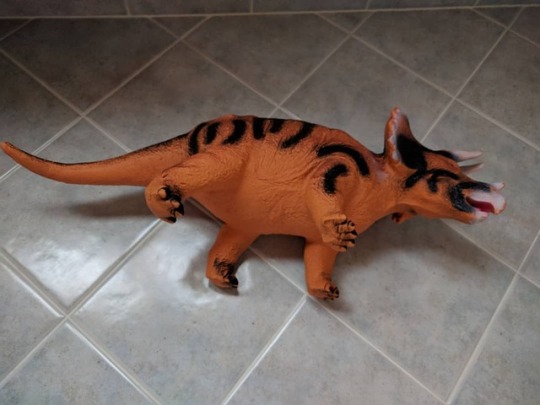
Do #cerapods have 5 front foot toes on each foot and four hind foot toes? I think we got screwed out of a couple #DinoToes! Or I learned something new... #Dinosaurs #Dinosauri #Cerapoda #Triceratops (at Veneto)
0 notes
Note
Thescelosaurus should probably be sister to Cerapoda in that cladogram.
Good catch! I always get thrown by basal neornithischians.
3 notes
·
View notes
Photo


Iguanodon bernissartensis, National Museum of Natural History, Paris, France
424 notes
·
View notes
Photo
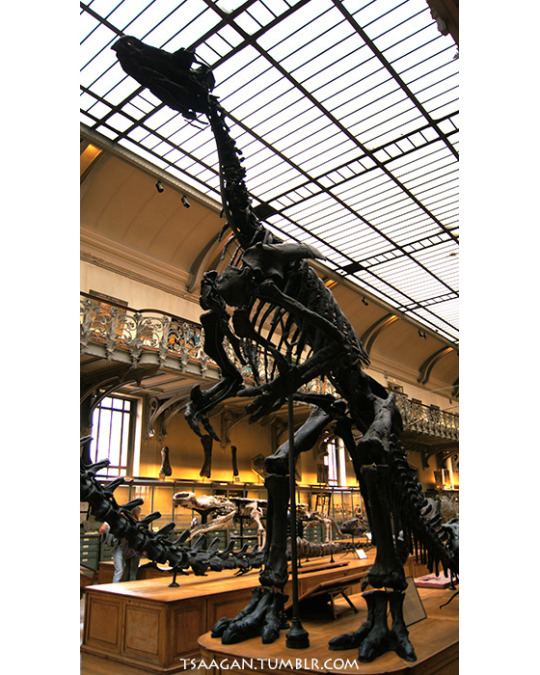

Iguanodon bernissartensis, National Museum of Natural History, Paris, France
72 notes
·
View notes
Photo

Pachycephalosaurus wyomingensis from Heureka’s The Giant Dinosaurs exhibit
205 notes
·
View notes
Photo

Pachycephalosaurus wyomingensis from Heureka’s The Giant Dinosaurs exhibit
76 notes
·
View notes
Photo

Protoceratops andrewsi from Heureka’s The Giant Dinosaurs exhibit
146 notes
·
View notes
Photo
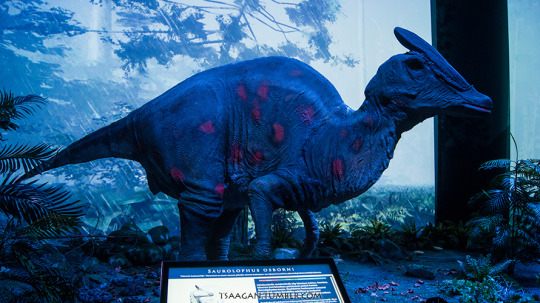

Saurolophus osborni and Pachycephalosaurus wyomingensis from Heureka’s The Giant Dinosaurs exhibit
70 notes
·
View notes
Photo
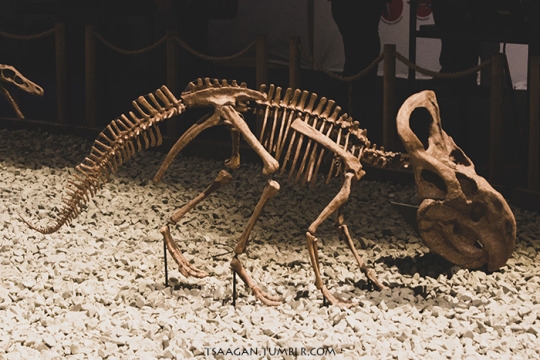
Protoceratops andrewsi from Heureka’s The Giant Dinosaurs exhibit
98 notes
·
View notes
Text
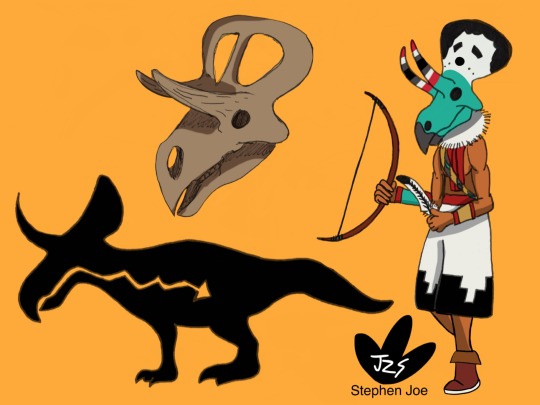
Day 21: Zuniceratops christopheri
Named after the Zuni Pueblo of the southwestern state such as New Mexico, which could make an honorable mention for #Nativember month.
#my art#dinosaur#dinosaurs#paleoart#dinosauria#ornithoscelida#ornithischia#genasauria#neornithischia#cerapoda#marginocephalia#ceratopsia#coronosauria#ceratopsoidea#zuniceratops#Zuni#Zuni Pueblo#southwest#native american heritage month#nativember#draw dinovember#dinovember#sketchbookapp#autodesk sketchbook
7 notes
·
View notes
Photo


Animatronic Triceratops horridus from Heureka’s The Giant Dinosaurs exhibit
43 notes
·
View notes
Photo
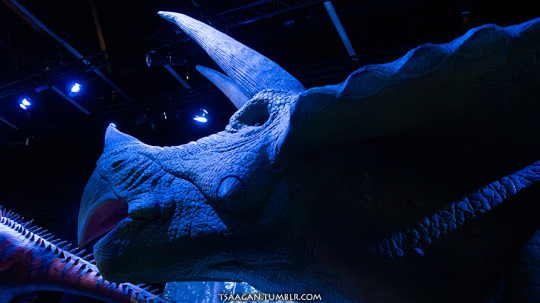
Animatronic Triceratops horridus from Heureka’s The Giant Dinosaurs exhibit
42 notes
·
View notes